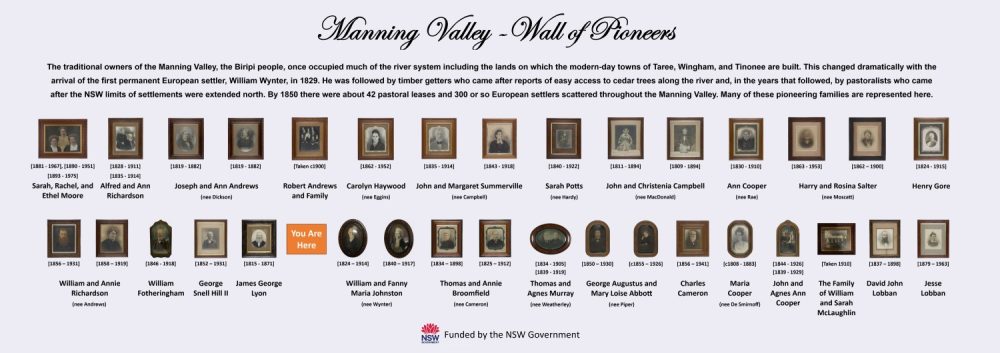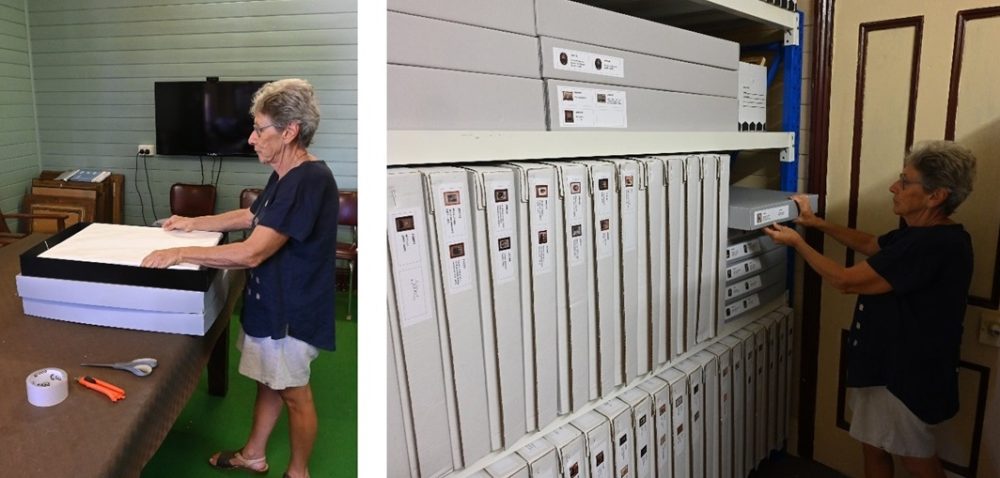Resolving the Photo Collection Project
Wingham Museum’s ‘Resolving the Photo Collection’ project aims to both improve the preservation of the museum’s large-format photos, portraits and artworks, and to improve public access to the collection. The NSW Government funded the project through a $7,000 Creative Capital grant, while the Society supplied the labour to clean, repair, research and digitise the collection.

A total of 157 portraits were assessed in the first stage of this project; two-thirds of which were archived and stored in our Research Centre, while the remaining one-third were put on display in the museum’s Entrance Room as part of the “Manning Valley – Wall of Pioneers”. Portraits will be rotated between display and storage on a six-monthly basis.
 Figure 1: Collections Manager, Robyn Greenaway, preparing a portrait for archival storage. Two-thirds of the collection (about 90) portraits are archived here.
Figure 1: Collections Manager, Robyn Greenaway, preparing a portrait for archival storage. Two-thirds of the collection (about 90) portraits are archived here.
The portraits assessed for this project have also been catalogued on Ehive, a web-based collections archive. Anyone, anywhere can find one of our portraits by searching “Wingham Museum” on the Ehive website. For example, this portrait of Raymond Thomas Cox, c1915 can be found by searching “Wingham Museum” on Ehive and then scrolling to the second page of results. This portrait is currently in archival storage – so the only way this may be seen is to view it on Ehive (here) or to use our Touchscreen Kiosk (once it is installed).

Figure 2: This portrait of Raymond Thomas Cox, may be found by searching “Wingham Museum” on Ehive and scrolling through the results.
In the second and final stage of the project, a 43-inch, 4K, touchscreen “kiosk” style display will be installed in the museum so that the public has full access to the collection – whether it is on display or in archival storage. Visitors to Wingham Museum may choose to simply view the portraits on display, but those who want to know a little more about our pioneers will be able to access additional information through a Touchscreen Kiosk (yet to be installed).
 Figure 3: For those interested, further information may be accessed through fact sheets, photos, audio, video re-enactments, etc. displayed on the touchscreen kiosk.
Figure 3: For those interested, further information may be accessed through fact sheets, photos, audio, video re-enactments, etc. displayed on the touchscreen kiosk.
